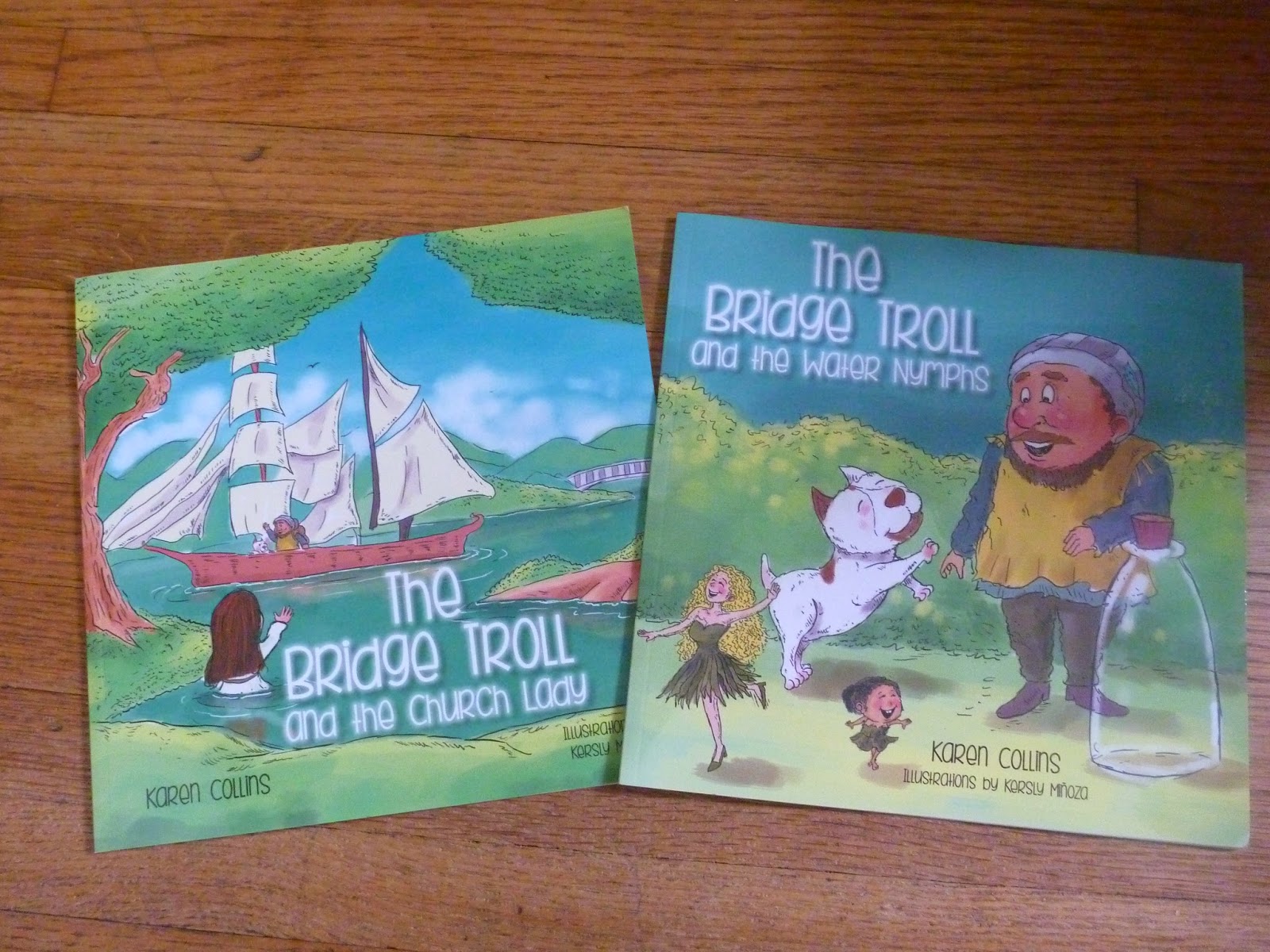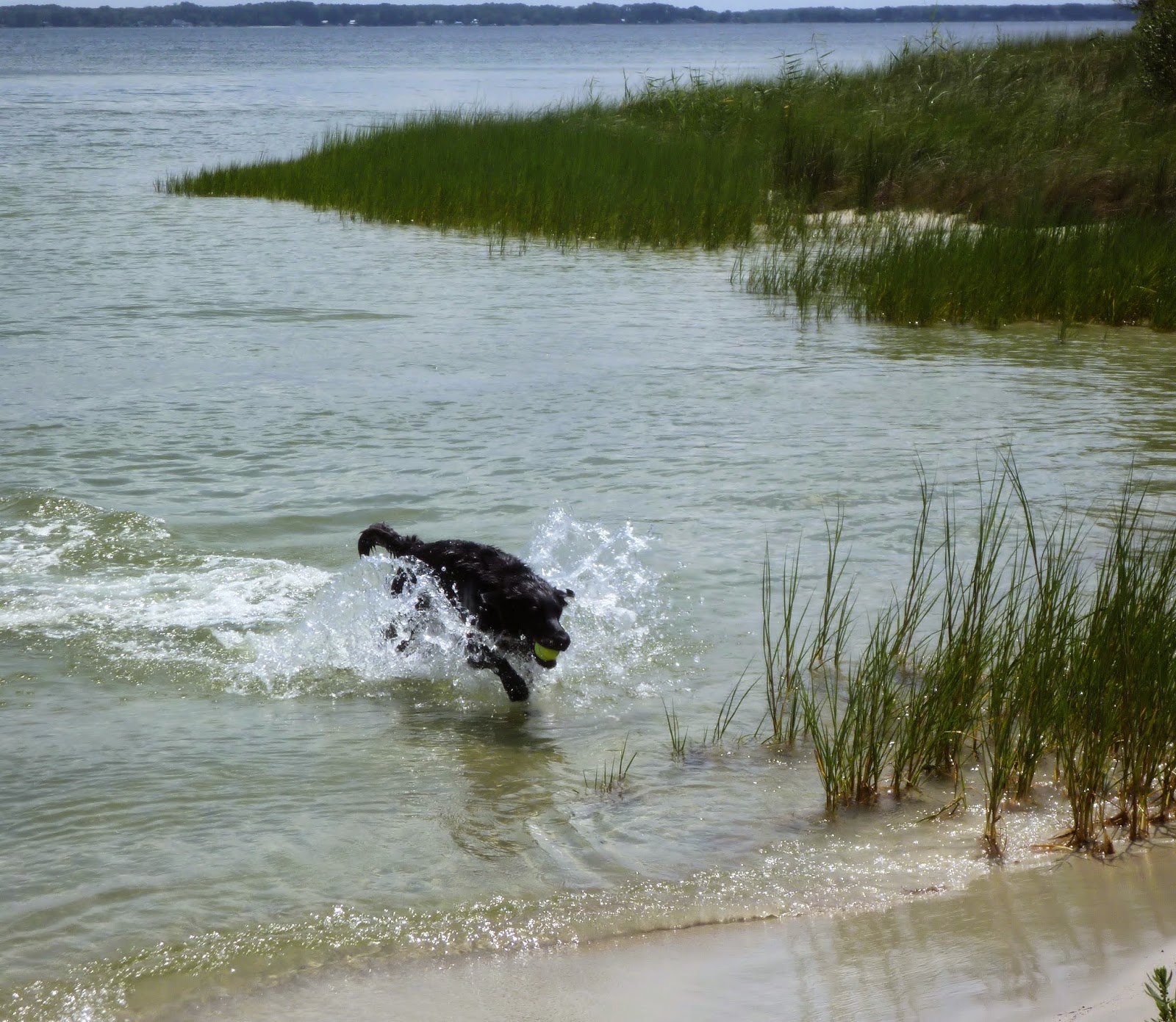We weighed anchor around 10 am and motored out of Mill Creek and back into the Pax River. The winds were 18-20 knots out of the north with 3 foot waves and heavy chop.
Once we were in the Bay and past the large fish trap, we prepared to raise the mainsail. As we raised the sail the halyard jammed under the steaming light. We hadn't realized that the halyard wrapped around the mast the previous evening when we removed the halyard and slackened it to maneuver around the lazy jacks.
We tried in vain to free the halyard; after several failed attempts to retrieve the halyard we lowered the main. By now the wind was dying, so we unfurled the genoa and motor sailed at about 6 knots directly into 9 knots of apparent wind and heavy chop.
The closer we came to Annapolis, the more boats we encountered. Crab pots once again became a frequent site as well. As we rounded R2 and made our approach to Whitehall Bay, there is a narrow crab pot free channel to follow, and the amount of deep water narrows are you approach Flashing Red "2W."
The Andromeda is by no means an inconspicuous boat design, yet for some reason that afternoon Phoenix seemed to be invisible. Powerboats zigged and zagged through the narrow channel in front of our bow with blatant disregard for the tonnage rule. One boat towing a water skier crossed about 50 ft in front of the bow, and without even a glance in our direction, the skier let go of his line and dropped off in front of us!
We put the boat in neutral to slow our forward progress and avoid a collision, all the while trying to anticipate just what these yahoos would do next. The spotter boat circled around the skier in the water and was just about to throttle up on a direct collision course with us when it finally donned on him to look up. The startled look on his face was priceless as he reeled back and glimpsed Phoenix's bowsprit -- less than a boat length away, as if we suddenly appeared as an apparition (that happened to be gliding in his direction at 5 knots). With a sheepish wave he changed directions and we continued to make our way into Whitehall Bay without further incident.
By 6:40 we had the anchor down, the chain snubbed and the engine off. There was a decent amount of boat traffic and Phoenix was moving with the wake, but it was time to get to work. Bill hoisted me up the mast in the Bosun's chair and I freed the halyard from the steaming light. We checked the lights to make sure the wiring wasn't harmed, and Bill lowered me back down to deck level - all within 10 minutes!
 |
| Anchored in Whitehall Bay, Annapolis |
| Anchored and ready to ride out another storm |
Just after 11 am we shut the motor off and were sailing close hauled under main and genoa in light air. We were moving at about 5 knots in 6-8 knots of wind, and 4.2 knots when the winds lessened to 5 knots. The helm was remarkably neutral and we were really enjoying our new headsail and Phoenix's ability to sail at more than half the wind speed in such light air.
The winds died to a mere 1-2, gusting to 3 knots, so it was time to roll in the headsail and fire up the motor. We motor sailed the remainder of the way home, stopping at Maryland Yacht Club for a quick pump out before arriving at our home dock at 2:30 pm.
After 2 weeks aboard Phoenix, it was bittersweet coming home. We were exhausted from being on the go so much, and missed the more leisurely pace that we usually keep on our sailing trips. The main goals of the trip were to test many of the systems we'd installed to date and to get a better feel for how Phoenix sails in different conditions. Being on the move helps us accomplish both goals, and now it was time to get back to the grindstone.
During the course of the trip we developed a list of projects to help improve the handling and livability on board -- things that we liked, didn't like, needed modifications, etc.
We were much happier with how Phoenix sailed upwind and were very pleased with the new headsail. We didn't get a chance to really sail her upwind in heavy air on the trip, but a better boom vang and improvements to our reefing system were added to the to do list.
Downwind sailing was a bit slower than we'd like heading down the Bay, but in all fairness we did not pull out our light air sails or the gennaker, so that was added to the list of things to try on a future sail.
Our Rutland 913 was really the unsung hero of trip, and it kept the batteries fully charged. Once we install the refrigeration we'll need to augment with more power, but installing the solar panels are also on the upcoming "short list."
We used well-insulated coolers and frozen jugs for the first part of the trip, which worked really well. However once the jugs defrosted and we resorted to buying block ice, it was a constant struggle to a) find anchorages that sold block ice and b) keep the water build up to a minimum in the coolers from ruining all of the food. We had plenty of food on board, and we would have been able to stay out much longer with little effort or hassle if we had our refrigerator set up. Most of the work has been done for the refrigeration install, and finishing that project is also on the horizon.
The storm dodger and squall-proof wind scoop proved to be worth their weight in gold and really made life at anchor enjoyable. There's nothing worse than being down below in a steamy, hot boat
with no airflow during a storm. Having the ability to keep both hatches open and air moving through the boat rain or shine was wonderful.
So now we're back and ready to take on the next round of projects, including another boat paint job. Stay tuned...





















































